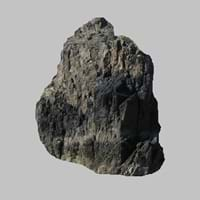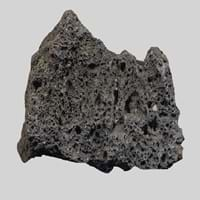Definition
Cataclasite is a type of cataclastic rock that is formed by fracturing and comminution during faulting. It is normally cohesive and non-foliated, consisting of angular clasts in a finer-grained matrix
Scoria is a dark-colored extrusive igneous rock with abundant round bubble-like cavities
Origin
Swiss Alps, Europe
Unknown
Discoverer
Michael Tellinger
Unknown
Etymology
From the Italian word cataclasi
From late Middle English (denoting slag from molten metal), from Greek skōria refuse, from skōr dung
Class
Metamorphic Rocks
Igneous Rocks
Sub-Class
Durable Rock, Medium Hardness Rock
Durable Rock, Medium Hardness Rock
Group
Not Applicable
Volcanic
Other Categories
Fine Grained Rock, Opaque Rock
Fine Grained Rock, Opaque Rock
Texture
Clastic
Vesicular
Color
Brown, Green, White, Yellow
Black, Brown, Dark Grey to Black, Red
Durability
Durable
Durable
Appearance
Dull and Banded
Glassy and Vesicular
Interior Uses
Decorative Aggregates, Homes
Decorative Aggregates, Interior Decoration
Exterior Uses
As Building Stone, As Facing Stone, Paving Stone
Garden Decoration, Paving Stone
Other Architectural Uses
Curbing
Curbing
Construction Industry
As Dimension Stone, Building houses or walls, Cement Manufacture, Construction Aggregate, for Road Aggregate
Cement Manufacture, Construction Aggregate, for Road Aggregate, In landscaping and drainage works
Medical Industry
Not Yet Used
Not Yet Used
Antiquity Uses
Artifacts
Artifacts, Monuments, Sculpture
Commercial Uses
Commemorative Tablets, Creating Artwork
As a traction material on snow-covered roads, Creating Artwork, High-temperature insulation, In gas barbecue grills
Types
Protocataclasite, Mesocataclasite, Ultracataclasite and Foliated cataclasite
Not Available
Features
Easily splits into thin plates, Is one of the oldest rock
Available in Lots of Colors and Patterns, Generally rough to touch, Surfaces are often shiny
Archaeological Significance
Monuments
Not Yet Used
Used
Famous Monuments
Not Applicable
Data Not Available
Sculpture
Not Yet Used
Used
Famous Sculptures
Not Applicable
Data Not Available
Figurines
Not Yet Used
Used
Formation
Cataclasiste rocks mainly form by pressure deep under the Earth's surface, from the extreme heat caused by magma or by the intense collisions and friction of tectonic plates.
Scoria forms when magma containing huge amount of dissolved gas flows from a volcano during an eruption.
Mineral Content
Albite, Apatite, Augite, Biotite, Calcite, Enstatite, Epidote, Feldspar, Micas, Muscovite or Illite, Pyroxene, Quartz
Apatite, Biotite, Calcite, Feldspar, Hematite, Hornblade, Ilmenite, Magnetite, Olivine, Pyroxene, Quartz, Silica
Compound Content
Silicon Dioxide
Ca, NaCl
Types of Metamorphism
Not Applicable
Burial Metamorphism, Cataclastic Metamorphism, Contact Metamorphism
Types of Weathering
Mechanical Weathering
Biological Weathering, Chemical Weathering, Mechanical Weathering
Types of Erosion
Coastal Erosion, Wind Erosion
Chemical Erosion, Coastal Erosion, Glacier Erosion
Grain Size
Fine Grained
Fine Grained
Porosity
Less Porous
Highly Porous
Luster
Vitreous
Subvitreous to Dull
Cleavage
Not Available
Perfect
Toughness
Not Available
2.1
Specific Gravity
2.1
Not Available
Transparency
Translucent to Opaque
Opaque
Density
2.9-3.1 g/cm3
Not Available
Resistance
Heat Resistant, Impact Resistant, Pressure Resistant
Heat Resistant, Impact Resistant, Pressure Resistant, Wear Resistant
Deposits in Eastern Continents
Asia
China, India, Russia, Saudi Arabia, South Korea
Afghanistan, Indonesia, Japan, Russia
Africa
Egypt, Ethiopia, Kenya, Madagascar, Morocco, South Africa
Ethiopia, Kenya, Tanzania
Europe
England, Finland, France, Spain, United Kingdom
Greece, Hungary, Iceland, Italy, Turkey
Others
Not Yet Found
Not Yet Found
Deposits in Western Continents
North America
Canada, USA
Bahamas, Barbados, Canada, Costa Rica, Cuba, Jamaica, Mexico, USA
South America
Argentina, Colombia
Argentina, Chile, Ecuador, Peru
Deposits in Oceania Continent
Australia
Central Australia, Western Australia
New Zealand, Western Australia










